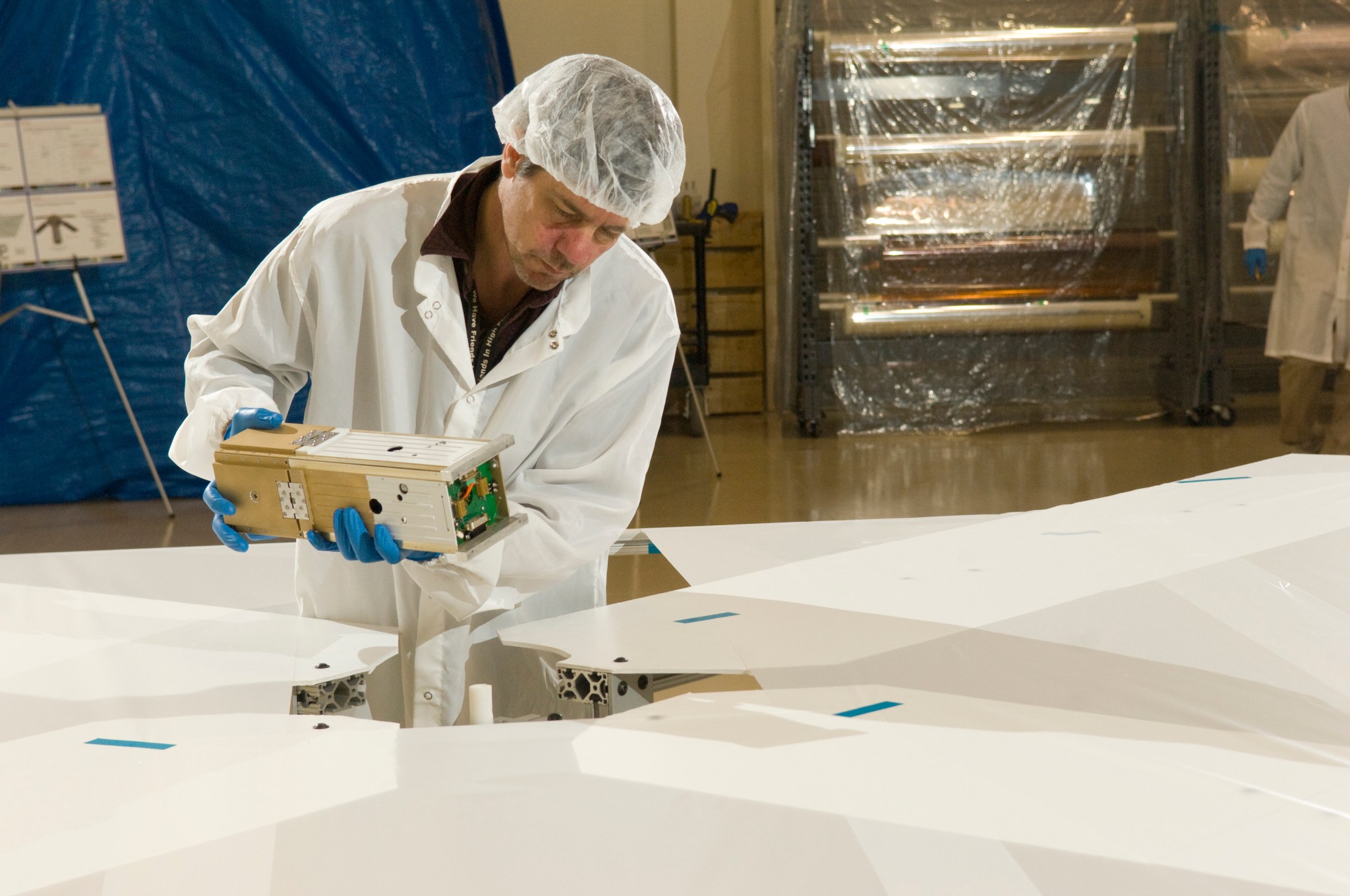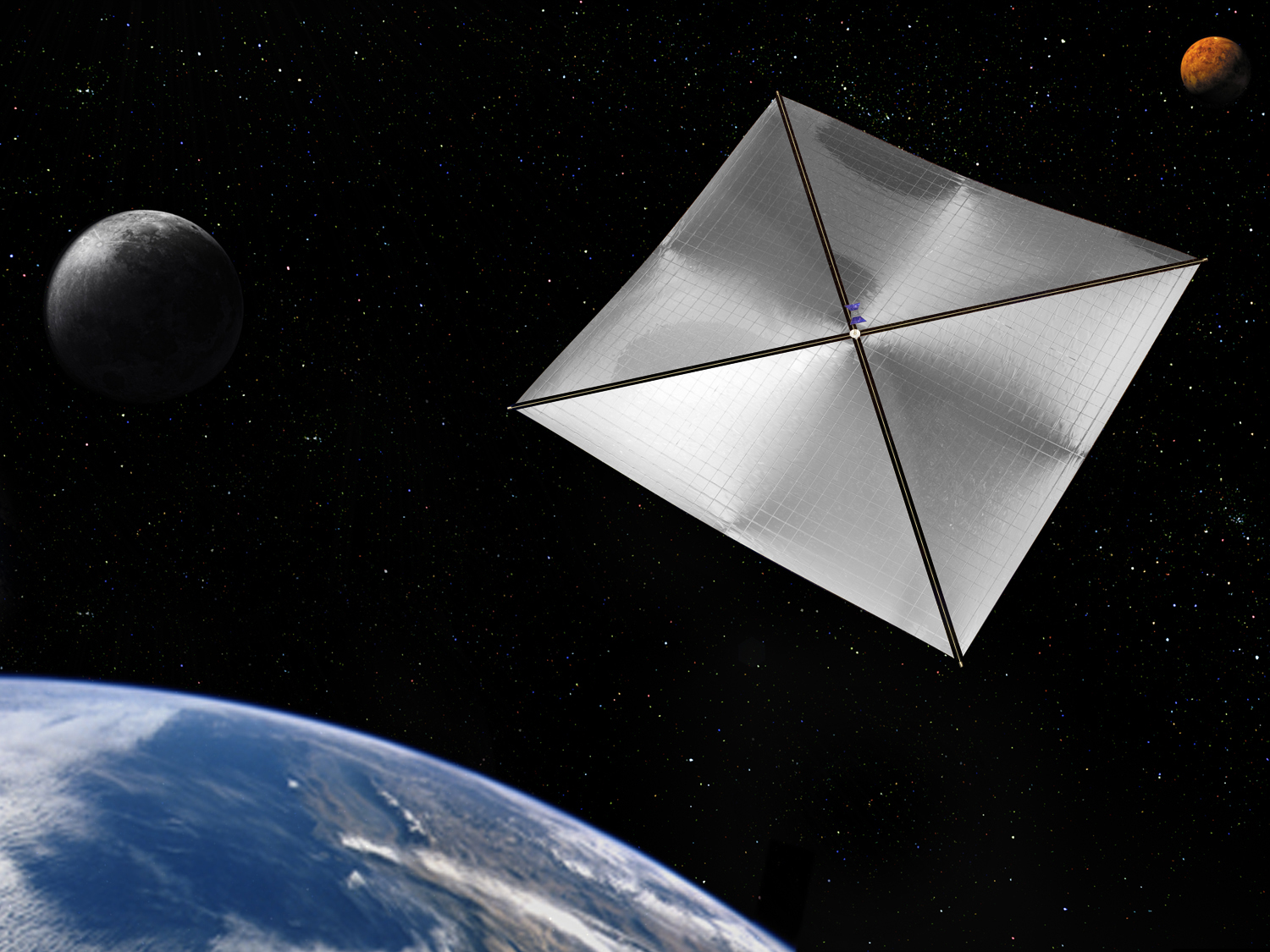On Dec. 6 at 1:31 a.m. EST, NASA for the first time successfully ejected a nanosatellite from a free-flying microsatellite. NanoSail-D ejected from the Fast, Affordable, Science and Technology Satellite, FASTSAT, demonstrating the capability to deploy a small cubesat payload from an autonomous microsatellite in space.
Nanosatellites or cubesats are typically launched and deployed from a mechanism called a Poly-PicoSatellite Orbital Deployer (P-POD) mounted directly on a launch vehicle. This is the first time NASA has mounted a P-POD on a microsatellite to eject a cubesat.
FASTSAT, equipped with six science and technology demonstration payloads, including NanoSail-D, launched Friday, Nov. 19 at 8:25 p.m. EST from Kodiak Island, Alaska. During launch, the NanoSail-D flight unit, about the size of a loaf of bread, was stowed inside FASTSAT in a P-POD.
“The successful ejection of NanoSail-D demonstrates the operational capability of FASTSAT as a cost-effective independent means of placing cubesat payloads into orbit safely,” said Mark Boudreaux, FASTSAT project manager at the Marshall Space Flight Center in Huntsville, Ala. “With this first step behind us, we have demonstrated we can launch a number of different types of payloads using this common deployment system from an autonomous microsatellite like FASTSAT.”

“NanoSail D has multiple enabling technology demonstration objectives for this flight,” said Joe Casas, FASTSAT project scientist at Marshall. Casas said when the NanoSail-D sail is deployed it will use its large sail made of thin polymer material, a material much thinner than a single human hair, to significantly decrease the time to de-orbit the small satellite without the use of propellants as most traditional satellites use.
The NanoSail-D flight results will help to mature this technology so it could be used on future large spacecraft missions to aid in de-orbiting space debris created by decommissioned satellites without using valuable mission propellants.
“This is a great step for our solar sail team with the successful ejection of the NanoSail-D satellite from FASTSAT,” said Dean Alhorn, NanoSail-D principal investigator and aerospace engineer at the Marshall Center. “We had to carefully plan and calculate the ejection time, so we’d be lined up over the United States and our ground controllers to execute the next phase of the mission.”
After ejection, a timer within NanoSail-D will begin a three day countdown as the satellite orbits the Earth. Once the timer reaches zero, four booms will quickly deploy and the NanoSail-D sail will start to unfold to a 100 square foot polymer sail. Within five seconds the sail fully unfurls.
If the deployment is successful, NanoSail-D will stay in low-Earth orbit between 70 and 120 days, depending on atmospheric conditions. NanoSail-D is designed to demonstrate deployment of a compact solar sail boom system that could lead to further development of this alternative solar sail propulsion technology and FASTSAT’s ability to eject a nanosatellite from a microsatellite — while avoiding re-contact with the FASTSAT satellite bus.
NanoSail-D was designed and built by engineers in Huntsville and managed at the Marshall Center with technical and hardware support from NASA’s Ames Research Center in Moffett Field, Calif. This experiment is a combined effort between the Space and Missile Defense Command, Von Braun Center for Science and Innovation, both located in Huntsville, Ala. and NASA.
FASTSAT launched on the STP-S26 mission — a joint activity between NASA and the U.S. Department of Defense Space Test Program. The satellite was designed, developed and tested at the Marshall Center in partnership with the Von Braun Center for Science & Innovation and Dynetics Inc. of Huntsville. Dynetics provided key engineering, manufacturing and ground operations support for the new microsatellite. Thirteen Huntsville-area firms, as well as the University of Alabama in Huntsville, also were part of the project team.
For more information on the timeline of the NanoSail-D deployment visit:
https://www.nasa.gov/wp-content/uploads/2016/10/501204main_NSD2_timeline_sequence.pdf?emrc=9c8bd8
To learn more about FASTSAT and the NanoSail-D missions visit:
https://www.nasa.gov/mission_pages/smallsats
Media contact: Kim Newton, 256-544-0371
Marshall Space Flight Center
kimberly.d.newton@nasa.gov



























